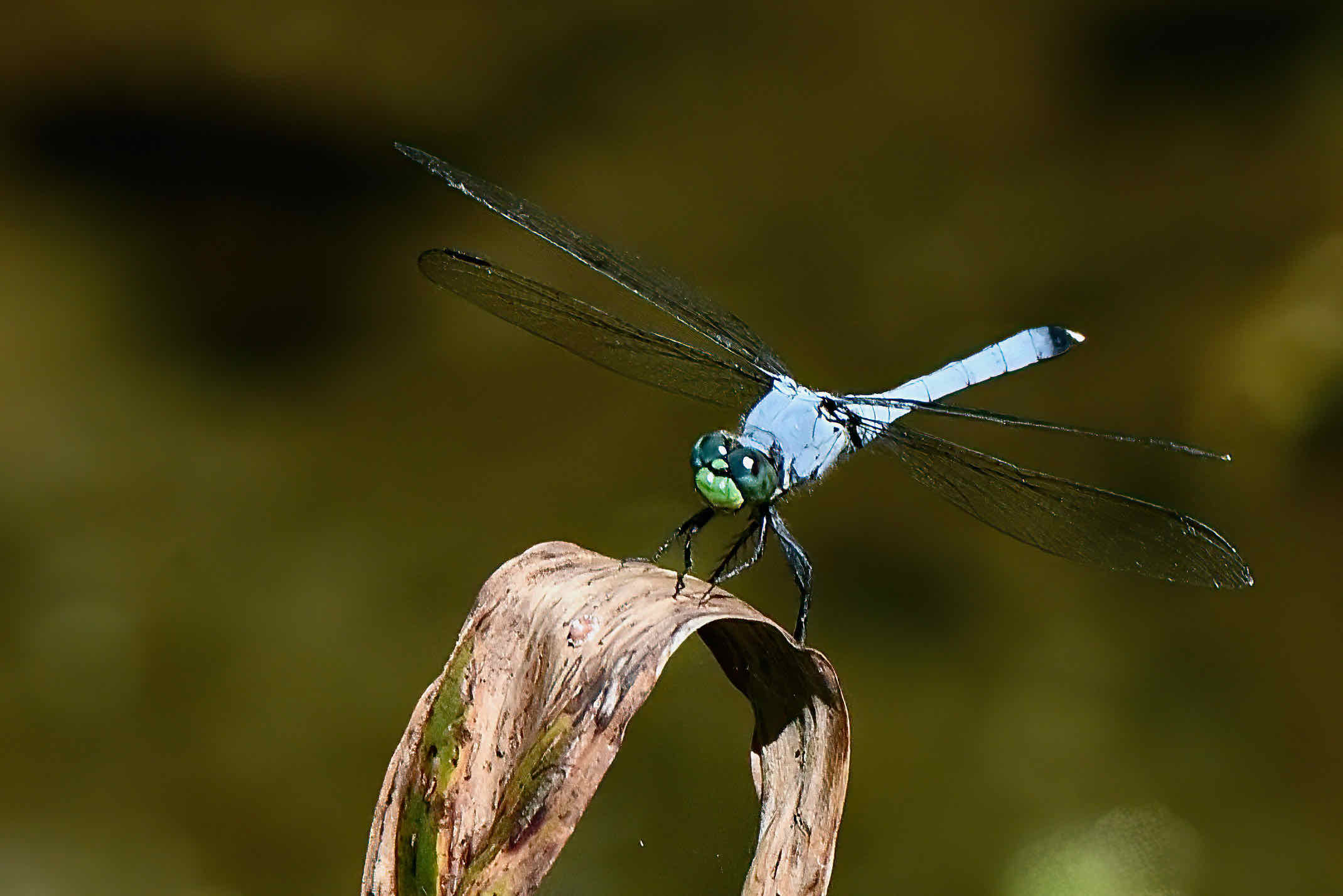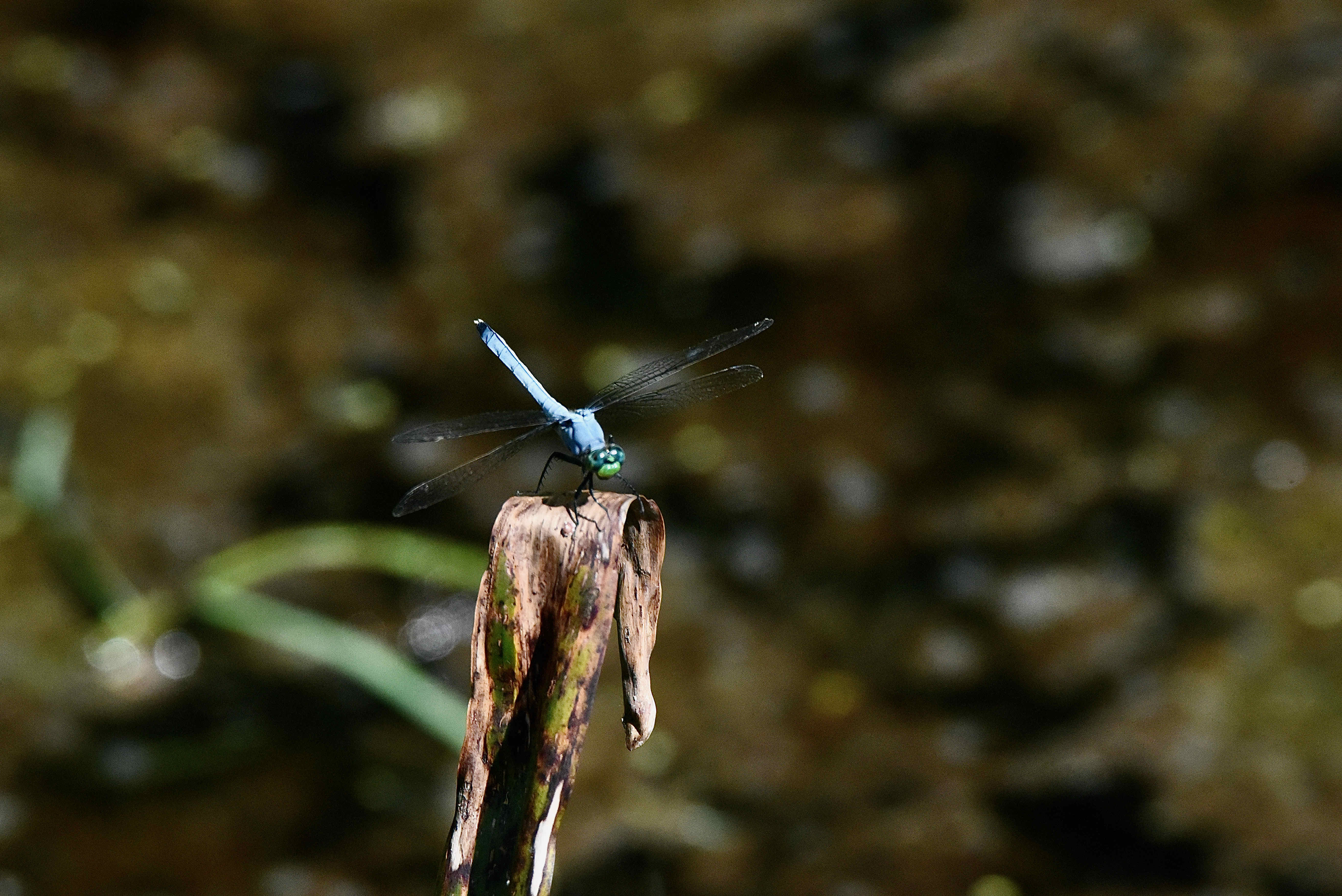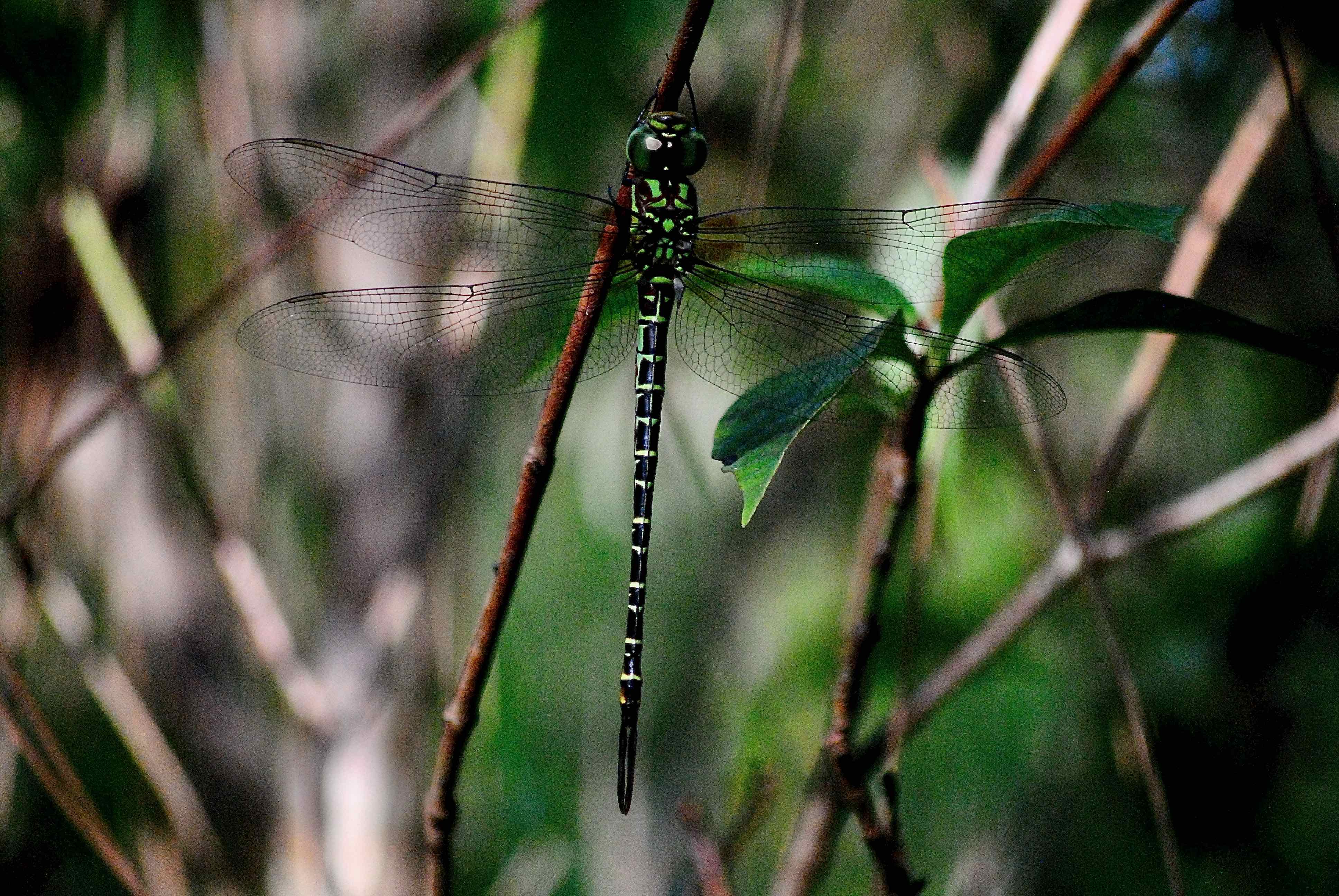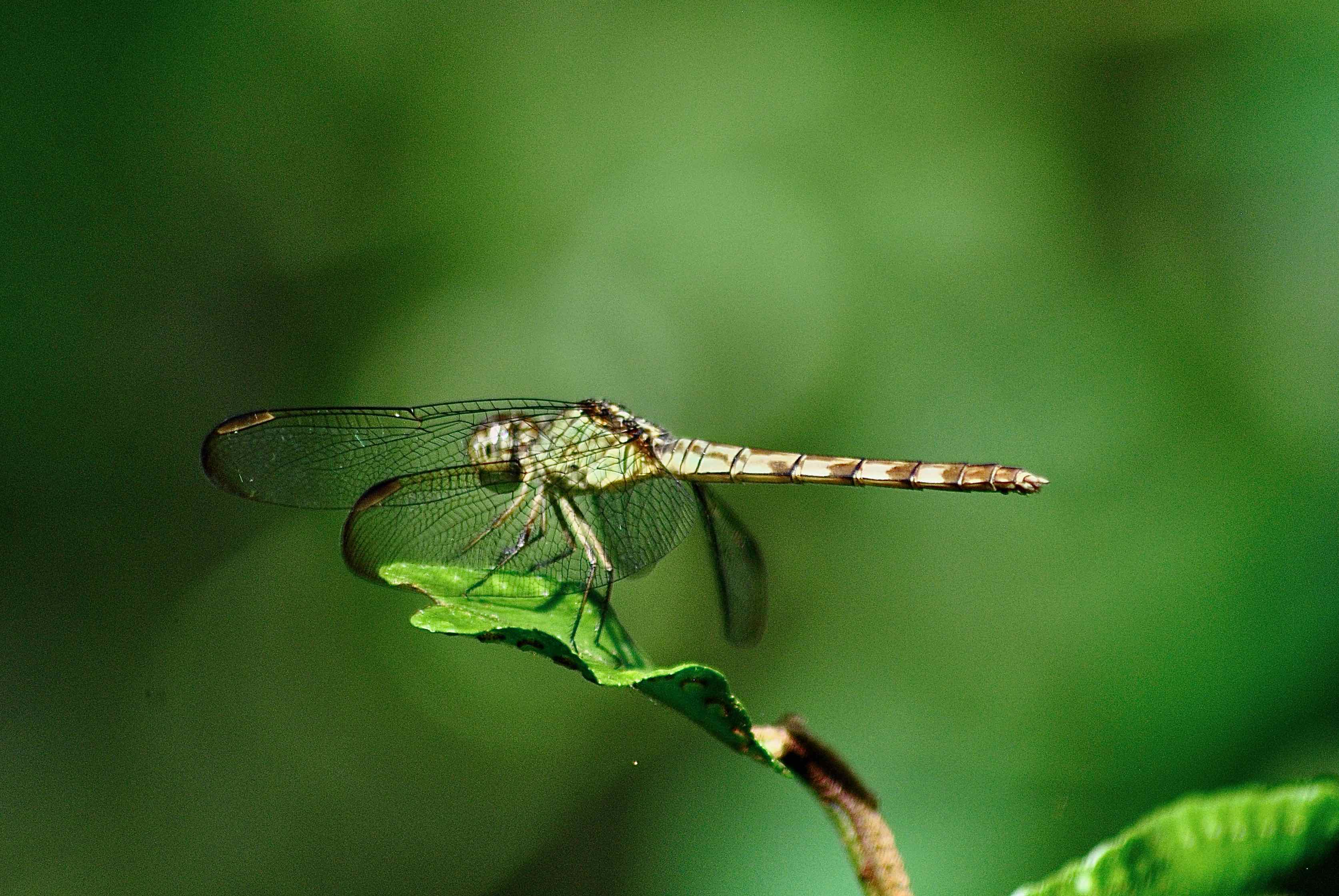
Eastern pondhawk dragonfly, photographed at Green Cay Nature Center, Boynton Beach, Palm Beach County, in May 2021.
If you're a grasshopper, a damselfly or even another dragonfly, you better keep your compound eyes peeled for this guy, the eastern pondhawk, 'cause he's got you on his (or her) menu.
Scientifically known as Erythemus simplicicollis, the eastern pondhawk dragonfly is among the most common dragonflies living in South Florida and beyond. It's found in all of Florida's 67 counties and as far north as southern Ontario. It's native range includes the eastern two-thirds of the United States into the Southwest, the Bahamas, the Caribbean, Mexico and Central America. It's active year-round in Florida and other warmer places, progressively less so the farther north it lives.
The eastern pondhawk is an abundant insect; according the International Union for Conservation of Nature, the eastern pondhawk population is actually increasing. And yes, there is a western pondhawk dragonfly that looks similar to the eastern. The two are close enough in terms of looks and anatomy that the Dragonfly Society of the Americas considers the two to be subspecies of the same animal, which it calls the common pondhawk. It classifies the eastern as E. simpliciollis simpliciollis and the western as E. simpliciiollis collocata.
Regardless of whether pondhawks are one species or two, they have these common characteristics: they are large insects, with a body length of about two inches. Young males and all females have a green face, green thorax and alternating green and black rectangular spots on the abdomen. Older males have a green face but the thorax and abdomen turn powder blue as they mature, as shown in the top photo and the first photo below. Males will go through 17 distinct color changes over a two- or three-week period before taking on their final hue. The wings are veiny and clear.
Western pondhawks are darker than the eastern and have a few other anatomical differences. The abdomen on the western is broader than that of the eastern, to mention one example. Pondhawks also have a habit of resting on the ground or on an object near the ground, like a rock or a log. Their typical habitat: on or near ponds, lakes, marshes or slow-moving streams.
Males are territorial and will defend their turf by chasing and cutting in front of interloping males in a leap frogging manner. The territory is about 5 square yards usually over aquatic plants.
As we said at the top, pondhawks are hunters. They hunt either from the ground or from a perch, taking small flying insect like mosquitos and bugs as large as themselves, grasping their prey using the spines on their middle and rear legs (seen in the top photo). They will eat other dragonflies, and, occasionally, their own kind. According to a study published in the January 2008 edition of the University of Florida's Journal of Undergraduate Research, pondhawks' carnivorous ways might be beneficial to farmers, organic farmers in particular, by keeping herbivore populations under control.
When pondhawks mate, the male grasps the females head with the tip of abdomen, while the female extends the tip of her abdomen to his in order to receive his sperm, forming what's called a wheel. Eventually, she'll deposit as many as 900 eggs into a body of water, where the next generation of pondhawks will begin life.
Other common names for the eastern pondhawk include the green clearwing dragonfly and green jacket dragonfly. They are members of Libellulidae, the family of skimmer draggonflies.
Photo Gallery — Click on photo for larger image
U.S. Department of Agriculture Distribution Maps

Links for
- Institute for Regional Conservation
- Natives for Your Neighborhood
- Atlas of Florida Vascular Plants
- USDA PLANTS Database
- Flora of North America
- Lady Bird Johnson Wildflower Center
- Institute for Aquatic and Invasive Plants
- Cornell Laboratory of Ornithology
- Audubon Society
- Florida Fish and Wildlife Conservation Commission
- National Geographic Society



